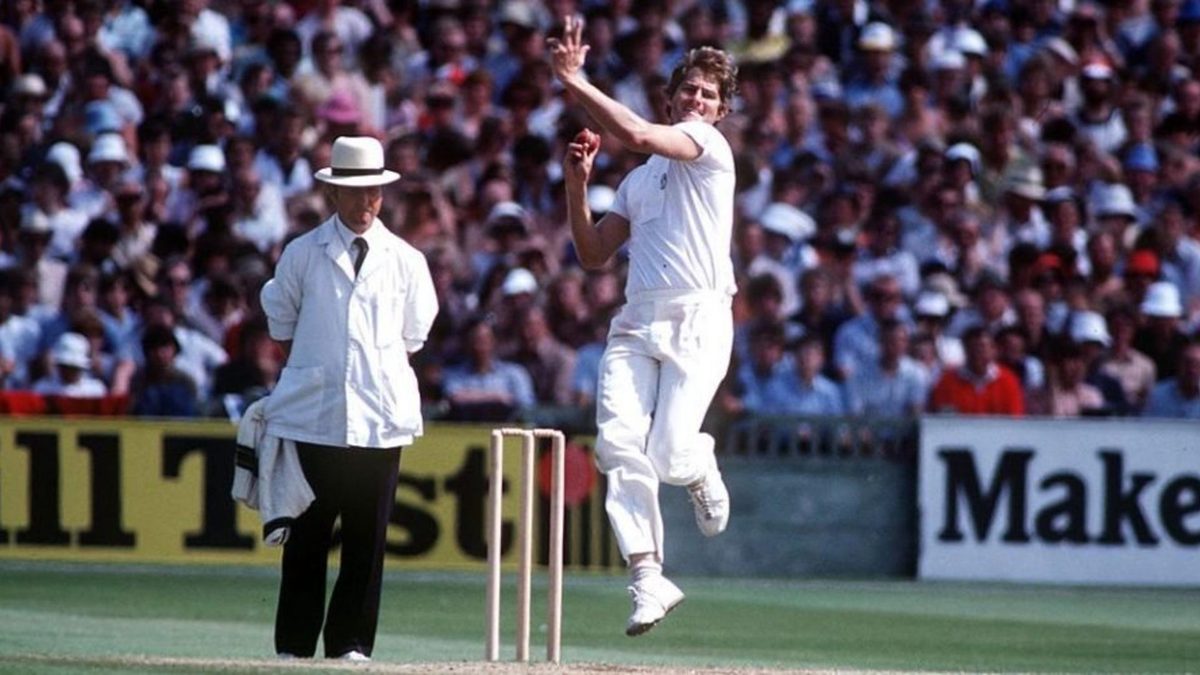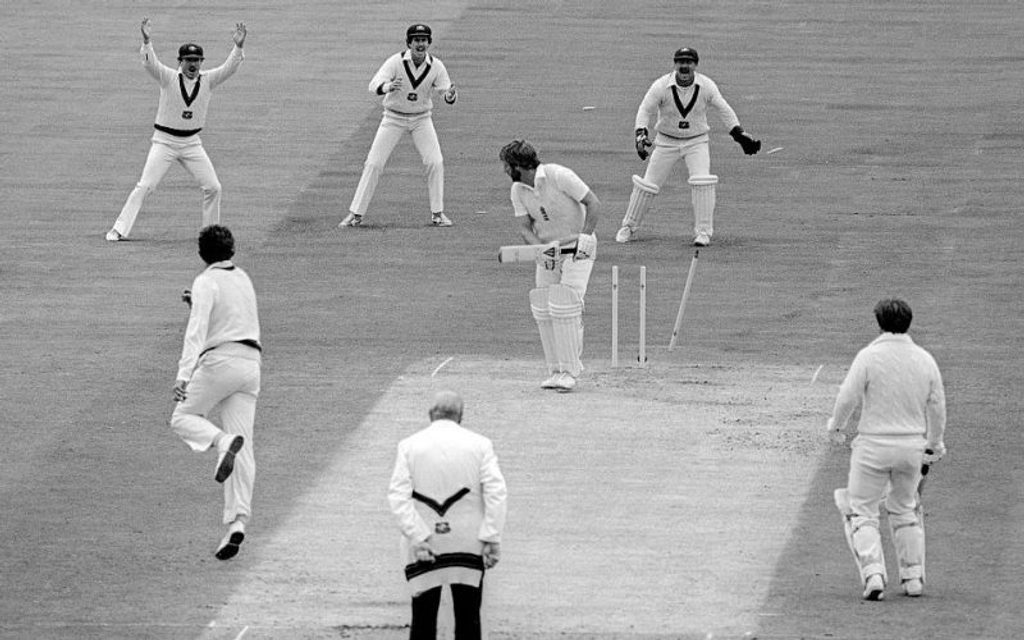
Australia were a divided team under the captaincy of Kim Hughes in 1981. But it did not stop Terry Alderman bowling brilliantly and being named a Wisden Cricketer of the Year.
Terry Alderman had another wonderfully successful Ashes tour – this time in a winning cause – in 1989 when he took 41 wickets at 17.36 and was player of the series.
It was typical of Terence Michael Alderman that when he looked back on his remarkable bowling success in England in 1981 he attributed it to two main factors – sharing the new ball with Dennis Lillee and the state of English pitches. Certainly no blame for the failure of the Australian team in what was an unusual series could be attached to the young Perth primary school teacher. Representing his country for the first time, Alderman played in all six Tests and stamped himself not only as a seam bowler of the highest quality, with a record 42 wickets in the series, but also as a slip fielder with a sure pair of hands.
Born on June 12, 1956, Alderman, the fourth of five children, had something of a sporting start in life. His father, William, was a big-kicking Australian Rules football centre half-back, who represented Western Australia and also opened both the batting and the bowling for the Western Australian colts cricket team without ever making the first-class scene.
Alderman followed naturally in his father’s footsteps, playing both cricket and football during his schooldays at Aquinas College in Perth. He continued to play football as an amateur until the end of the 1978 season, when he decided that it would be foolish to continue mixing the two sports. By then he was already beginning to make his mark as a medium-paced bowler, although it would have required a crystal ball of remarkable clarity to foresee the impact he would make in England three years later.
Alderman began playing cricket as a ten-year-old who liked to bowl fast. By his third year at high school he showed enough promise to be chosen for one game in the first eleven. A quick bowler who bowled off a rather short run, he became a permanent member of the first team for his last two years at school where he was coached by Basil Rigg, a former West Australian batsman. Representing Western Australia at a schoolboys’ carnival in Melbourne in 1972/73, he was chosen in the Australian schoolboys team to play a Governor’s eleven.
Playing for Western Australia in colts matches in Melbourne and Adelaide in 1973/74, Alderman took six wickets against Victoria in Melbourne. That performance brought him to the notice of those who chose the state senior side and the following season, in which Dennis Lillee and Jeff Thomson made life so uncomfortable for Mike Denness’s Englishmen, Alderman was picked in the Western Australian team – only to have Ian Chappell take 24 runs off his second over in a limited-over Gillette Cup match.
 Stumps flying – Terry Alderman uproots Ian Botham’s middle stump at Trent Bridge
Stumps flying – Terry Alderman uproots Ian Botham’s middle stump at Trent Bridge
Alderman was 12th man for the two Sheffield Shield matches against South Australia and Victoria before making his Shield debut against New South Wales in Sydney, a match which brought him mixed fortunes. A raw 18-year-old, he took five for 63 and pulled a hamstring which led to his having to return home.
Between 1974/75 and 1980/81 Alderman was twice dropped from the state team. Looking back now he believes that it was perhaps a mistake to have been chosen for first-class cricket so early in his career. The resilience of youth, and the feeling that he had age on his side, saw him bounce back, and although he thought he had a chance of being picked for Australia’s tour of India in 1979 he had to wait until the end of the 1980/81 season to win national recognition and his first tour.
Not even the Australian selectors could have imagined the success that their rookie would enjoy. Neither did Alderman, who had spent the English summer of 1980 playing for Watsonians in Edinburgh during a stint as coach at George Watson’s College. He felt the experience was beneficial, but was disappointed not to take more wickets than he did. Despite a slow start to the season back home, he finished with 32 Shield wickets and would have been bitterly disappointed had he failed to win selection for the Ashes tour.
No one would have been more delighted with Alderman’s nine-wicket Test debut at Trent Bridge than John Inverarity, the former Western Australian captain and Test batsman, who had long been championing his cause. “He was a big influence,” Alderman said. “He always encouraged me and was probably the reason why I got a chance in the first place”. But it was Lille who played perhaps the most significant part in the emergence of Alderman into a Test force in England.
Always careful to well within himself, Alderman had never been a pace bowler in the true sense of the word. Instead, he had relied mainly on the swing generated by a seemingly lazy run-up that ends in a fairly chest-on delivery. He has never had a meanness of some of the great fast bowlers. But a spell in the Edgbaston nets just before the second Prudential Trophy match last June was a turning point. “The practice wickets were lively and Dennis told me to bowl off a long run and see what I could do. I tried to hit the seam and was unplayable in the nets. That was the first time I realised I could do more as a seam bowler than as a swing bowler. What I did after that was to try and do more off the wicket.”
In the event, not only did he make the ball do more off the seam, he also bowled faster than he had in Australia. His 6ft 2½in frame, broad shouldered and tapering also came in for some lengthy spells bowling into the wind. He thrived on the challenge. “When you’re bowling at the other end to Dennis, you’ve got to have a better chance of getting wickets. Rod Marsh was also a great help on the trip. But you have to look at the series as a whole and admit that the wickets did help.”
Another helpful influence had been Daryl Foster, the West Australia team coach. “Daryl spurred me on in regard to fitness, which is not one of my fortes,” Alderman admits. “I love golf and enjoy walking and I’ve taken up squash. I also like sauna – they’re a poor man’s way of losing weight. But I’ve done a lot more running in the last 18 months than I used to.” Alderrman’s fitness was reflected in the stamina he showed in his long bowling spells in England. Married in December 1977, to Jane Elizabeth Johnson, a school teacher from Derbyshire whom he met in Perth, he has always appreciated the family influence on his life.
Despite his record-breaking performances in England, Alderman refuses to be carried away. “I play the game from one game to the next. I’ve seen the high points and the low. If you can survive them, you’ll be OK.” Judging by the attitude and ability of this most pleasant young man, he will be.








